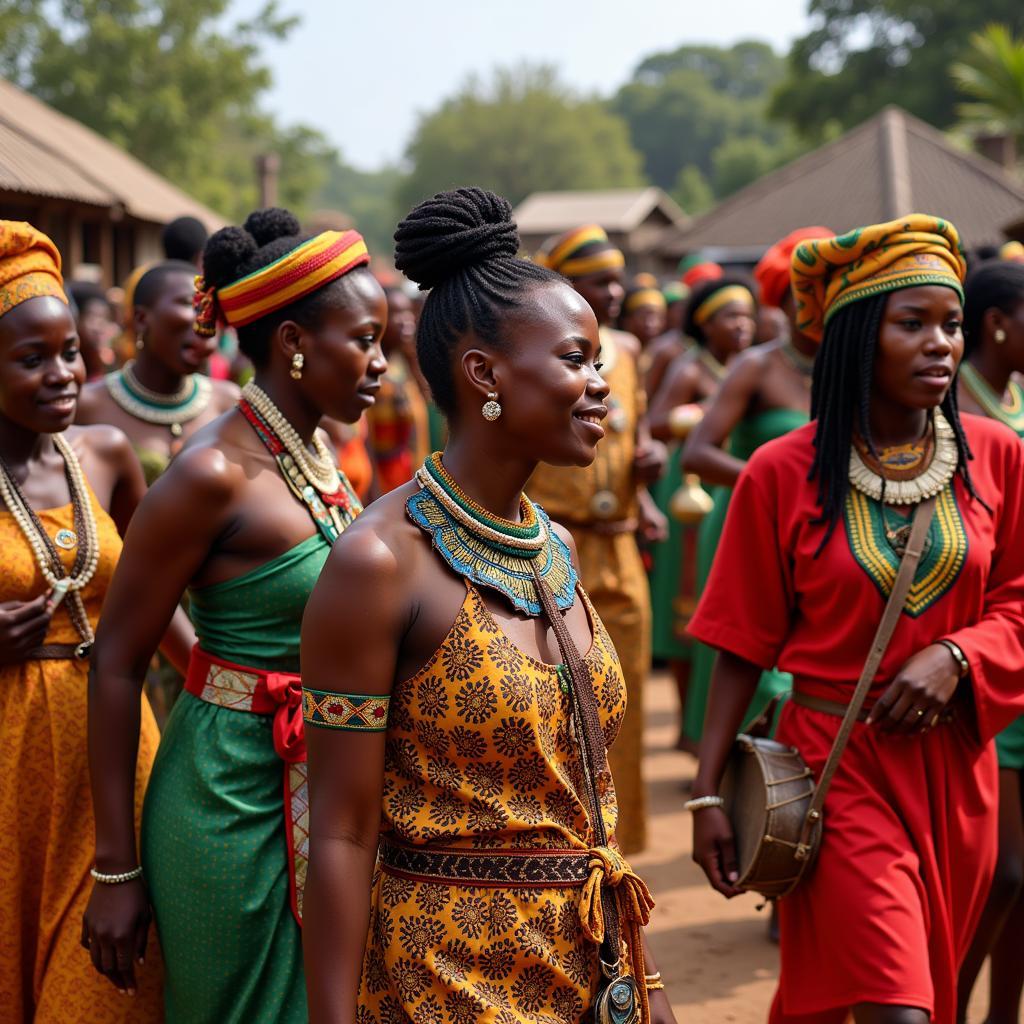Exploring Africa’s Dry Places: A Journey Through Arid Landscapes
Africa is a continent of diverse landscapes, from lush rainforests to towering mountains. However, a significant part of this vast landmass is dominated by dry, arid environments. This article will delve into the fascinating world of Africa’s dry places, exploring their unique characteristics, diverse ecosystems, and the resilient communities that thrive within them.
Understanding Arid Landscapes: What Defines Africa’s Dry Places?
Africa’s dry places are characterized by low rainfall, high temperatures, and limited vegetation. These regions experience a prolonged dry season, often spanning several months, where water scarcity becomes a significant challenge. This scarcity shapes the unique features of these environments, leading to adaptations in plant and animal life, and influencing the cultures and traditions of local communities.
The Diverse Ecosystems of Africa’s Dry Lands
Africa’s dry places encompass a variety of ecosystems, each with its distinct characteristics. Here are some prominent examples:
1. The Sahara Desert: The World’s Largest Hot Desert
The Sahara Desert, the world’s largest hot desert, dominates North Africa, stretching across eleven countries. Its vast expanse, characterized by sand dunes, rocky plateaus, and scattered oases, is a testament to extreme aridity. Despite its harsh conditions, the Sahara is home to a surprisingly diverse range of life, including nomadic communities, desert animals like camels and scorpions, and hardy desert plants like cacti and acacia trees.
2. The Namib Desert: A Coastal Oasis of Unique Landscapes
The Namib Desert, situated along the Atlantic coast of Namibia, is known for its unique coastal environment. Its iconic red sand dunes, towering canyons, and ancient fossilised forests create a spectacular landscape. The presence of fog, known locally as “sea smoke,” provides a vital source of moisture for the desert’s unique flora and fauna, including the desert-adapted elephant seals and the Namib sand gecko.
3. The Kalahari Desert: A Vast Savanna with Diverse Wildlife
The Kalahari Desert, located in Southern Africa, is a vast savanna characterized by red sand, sparse vegetation, and seasonal rainfall. It is home to a rich variety of wildlife, including lions, elephants, giraffes, and zebras, which roam across its expansive plains. The San people, known for their hunter-gatherer lifestyle and intricate knowledge of the Kalahari, have adapted to its challenging conditions for centuries.
Adaptations and Resilience in Dry Places: Surviving the Harsh Conditions
Life in Africa’s dry places requires extraordinary adaptation.
Plant Adaptations: Conserving Water and Thriving in Aridity
Plants in dry environments have developed unique strategies to survive with limited water.
- Deep Roots: Many desert plants have extensive root systems that tap into underground water sources.
- Water Storage: Succulents like cacti store water in their stems and leaves to endure prolonged dry periods.
- Reduced Transpiration: Desert plants have adapted to minimize water loss through transpiration by developing thick cuticles, small leaves, or even losing their leaves entirely during dry seasons.
Animal Adaptations: Utilizing Water Sources and Withstanding Heat
Animals in Africa’s dry places have evolved remarkable adaptations to cope with the harsh conditions.
- Water Conservation: Camels store water in their humps and can survive for extended periods without drinking.
- Nocturnal Activity: Many desert animals are nocturnal, reducing their exposure to intense daytime heat.
- Adapting to Limited Food: Desert animals have developed specialized diets, often relying on insects, seeds, or sparse vegetation.
Human Adaptations: Sustainable Practices and Cultural Resilience
Humans have inhabited Africa’s dry places for centuries, developing sustainable practices and cultural traditions to thrive in these challenging environments.
1. Nomadic Lifestyles: Following Water and Grazing Lands
Nomadic communities, like the Tuareg in the Sahara, adapt their lifestyles to the availability of water and grazing lands. They migrate seasonally with their livestock, following rainfall and the growth of vegetation.
2. Water Management: Harvesting and Conserving Precious Resources
Communities in dry regions have developed innovative techniques to manage and conserve water.
- Rainwater Harvesting: Traditionally, people have collected rainwater in cisterns and earthen tanks.
- Water Wells: Hand-dug wells provide access to underground water sources.
- Water Conservation Techniques: Traditional irrigation methods and careful water management practices are employed to conserve precious water resources.
3. Cultural Adaptations: Resilience and Connection to the Land
The harsh conditions of Africa’s dry places have shaped the cultures and traditions of local communities, fostering resilience and a deep connection to the land.
- Traditional Knowledge: Local communities possess a wealth of knowledge about their environments, including the properties of medicinal plants, water sources, and the behavior of desert animals.
- Rituals and Beliefs: Traditional ceremonies and rituals often reflect the importance of water and respect for the natural world.
Protecting Africa’s Dry Places: A Collective Responsibility
Africa’s dry places face increasing pressures from climate change, desertification, and human activities. Conservation efforts are crucial to protect these fragile ecosystems and ensure the well-being of the communities that depend on them.
1. Combating Desertification: Restoring and Preserving Arid Lands
Desertification is a major threat to dry areas, caused by factors like overgrazing, deforestation, and unsustainable agricultural practices.
- Reforestation and Afforestation: Planting trees and restoring vegetation can help to mitigate desertification and improve soil fertility.
- Sustainable Land Management: Implementing sustainable land management practices, such as rotational grazing and conservation agriculture, can reduce soil erosion and preserve biodiversity.
2. Protecting Biodiversity: Conserving Unique Flora and Fauna
The unique biodiversity of Africa’s dry places is threatened by habitat loss, climate change, and human encroachment.
- Protected Areas: Establishing national parks and reserves helps to safeguard important habitats and species.
- Community-Based Conservation: Engaging local communities in conservation efforts can foster a sense of ownership and responsibility for their environment.
3. Addressing Climate Change: Mitigating and Adapting to Its Impacts
Climate change is exacerbating aridity and increasing the frequency and severity of droughts in Africa.
- Reducing Greenhouse Gas Emissions: Global efforts to reduce greenhouse gas emissions are essential to mitigate climate change and its impacts on dry areas.
- Adaptive Strategies: Developing adaptive strategies, such as drought-resistant crops and water-efficient irrigation technologies, can help communities cope with the changing climate.
Conclusion
Africa’s dry places are remarkable environments that showcase the incredible resilience of life in the face of harsh conditions. From the towering dunes of the Sahara to the coastal landscapes of the Namib, these arid regions are home to unique ecosystems, diverse cultures, and resilient communities. Understanding these environments, protecting their biodiversity, and supporting the well-being of their inhabitants is a collective responsibility for all.

